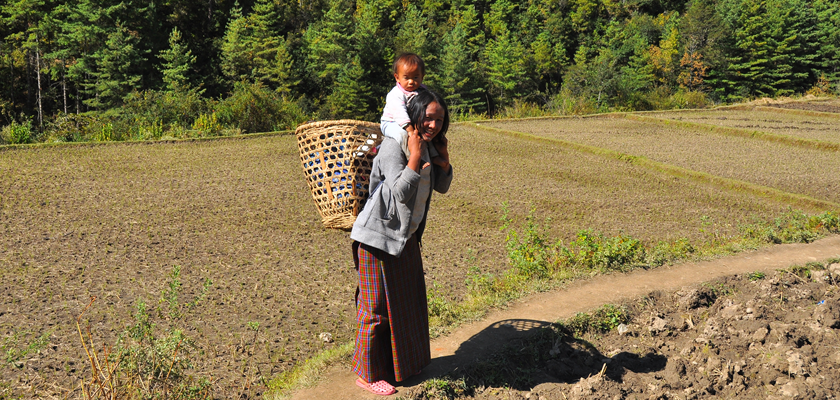" Take nothing but memories, leave nothing but foot prints "
- The Himalayan Kingdom of BHUTAN -Other Information
People
Early records suggest scattered clusters of inhabitants had already settled in Bhutan when the first recorded settlers arrived 1400 years ago. Bhutan’s indigenous population is the Drukpa. Three main ethnic groups, the Sharchops, Ngalops and the Lhotshampas, make up today’s Drukpa with the total population of 671083 (six hundred seventy one thousand and eighty three only). Bhutan’s earliest residents, the Sharchops, reside predominantly in eastern Bhutan.Their origin can be traced to the tribes of north Burma and northeast India. The Ngalops migrated from the Tibetan plains and are the importers of Buddhism to the kingdom. Most of the Lhotshampas migrated to the southern plains in search of agricultural land and work in the early 20th century. More than 90% of the people live on subsistence farming, scattered in sparsely populated villages across the rugged terrain of the Himalayas.
The geography of the land kept each ethnic group separate until the middle of this century when roads were built between the east and the west. As a result, the Sharchops have retained their influence over the east, while the Ngalops predominate in the west, and the Lhotshampas have retained their homes in the south of Bhutan.
Language
The contrasting ethnic diversity of the Bhutanese people has meant that a number of different languages and dialects are spoken throughout the kingdom. People speak more than 18 dialects at present. The national language is Dzongkha, which is taught at all schools. So different are the dialects that eastern and western neighbors can have great difficulty understanding each other. English is widely spoken in the country, which makes it easier for the tourist to communicate.
Traditional Dress
Bhutanese men wear a Gho, which is longish, robe tied around the waist by small belt known as Kera. The women’s ankle length dress called Kira, which are brightly colored, finely woven fabrics with traditional patterns.
Social Equity
Bhutan is relatively egalitarian society where social inequity has never been a major issue. Many social problems such as gender bias and poverty issues are either non-issues or less accentuated in the country as compared to in the region. Bhutan is a “gender balanced” country, which partly explains why there have been no specific policies or strategies targeting the upliftment of women. Women enjoy equality under the law and in the society and their active involvement in all spheres of socio-economic development have contributed immensely to the rapid progress achieved in the country.
